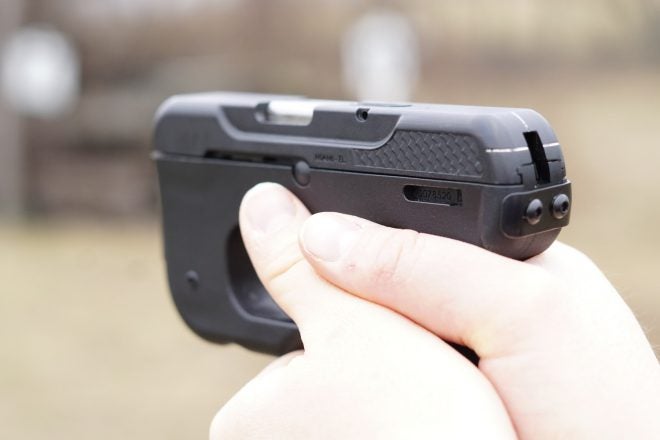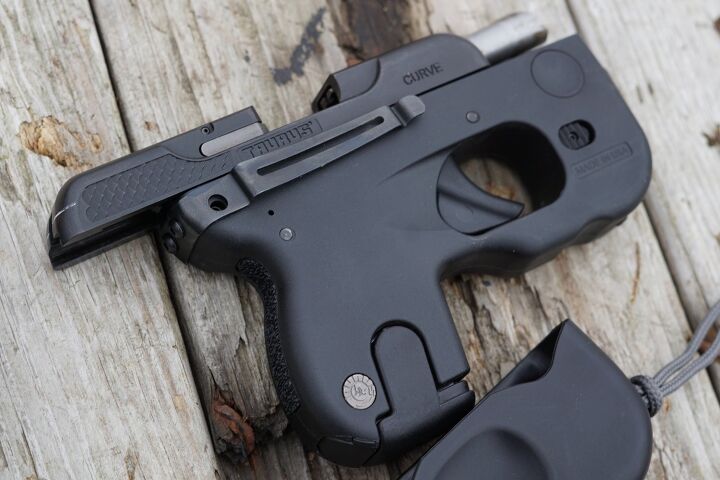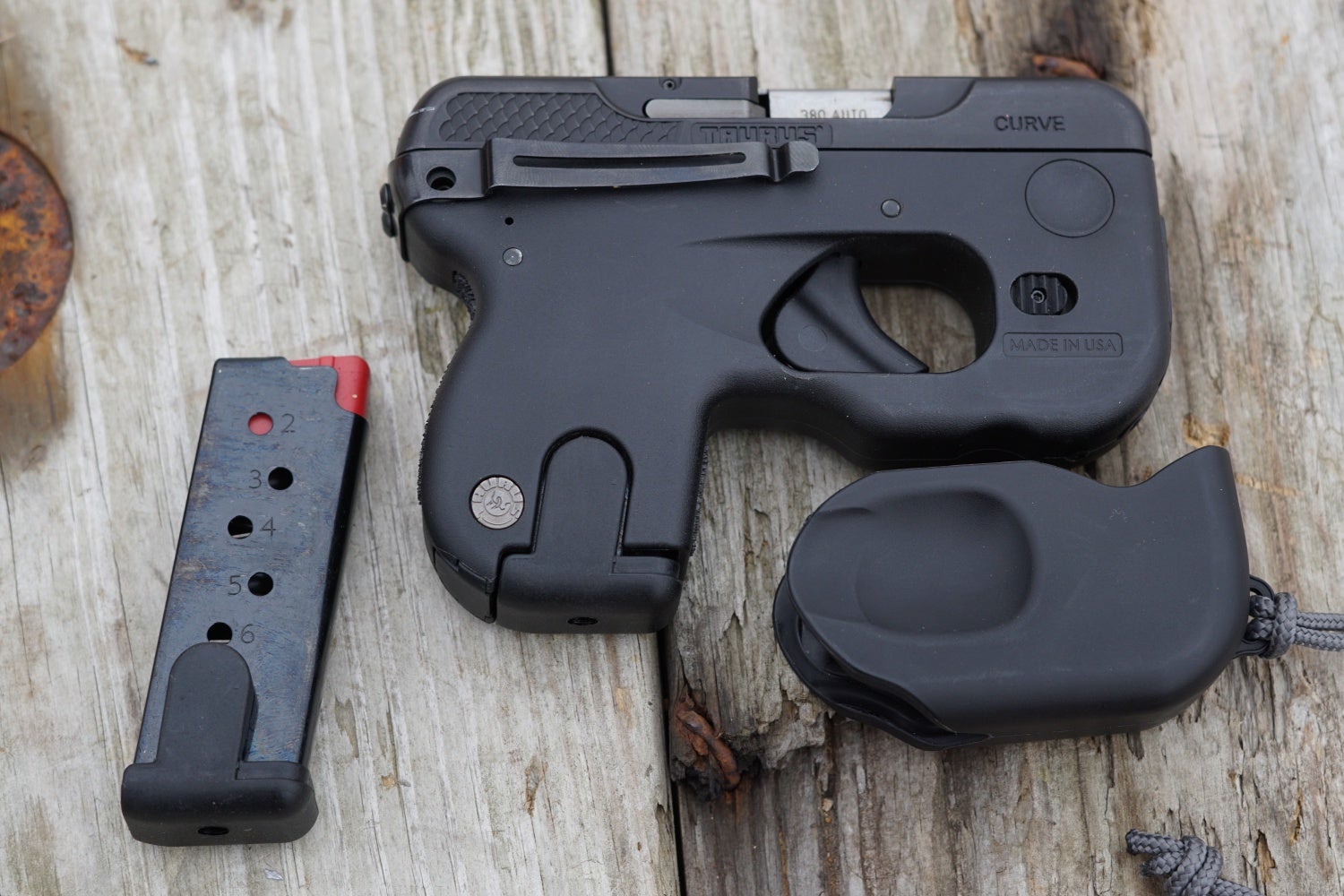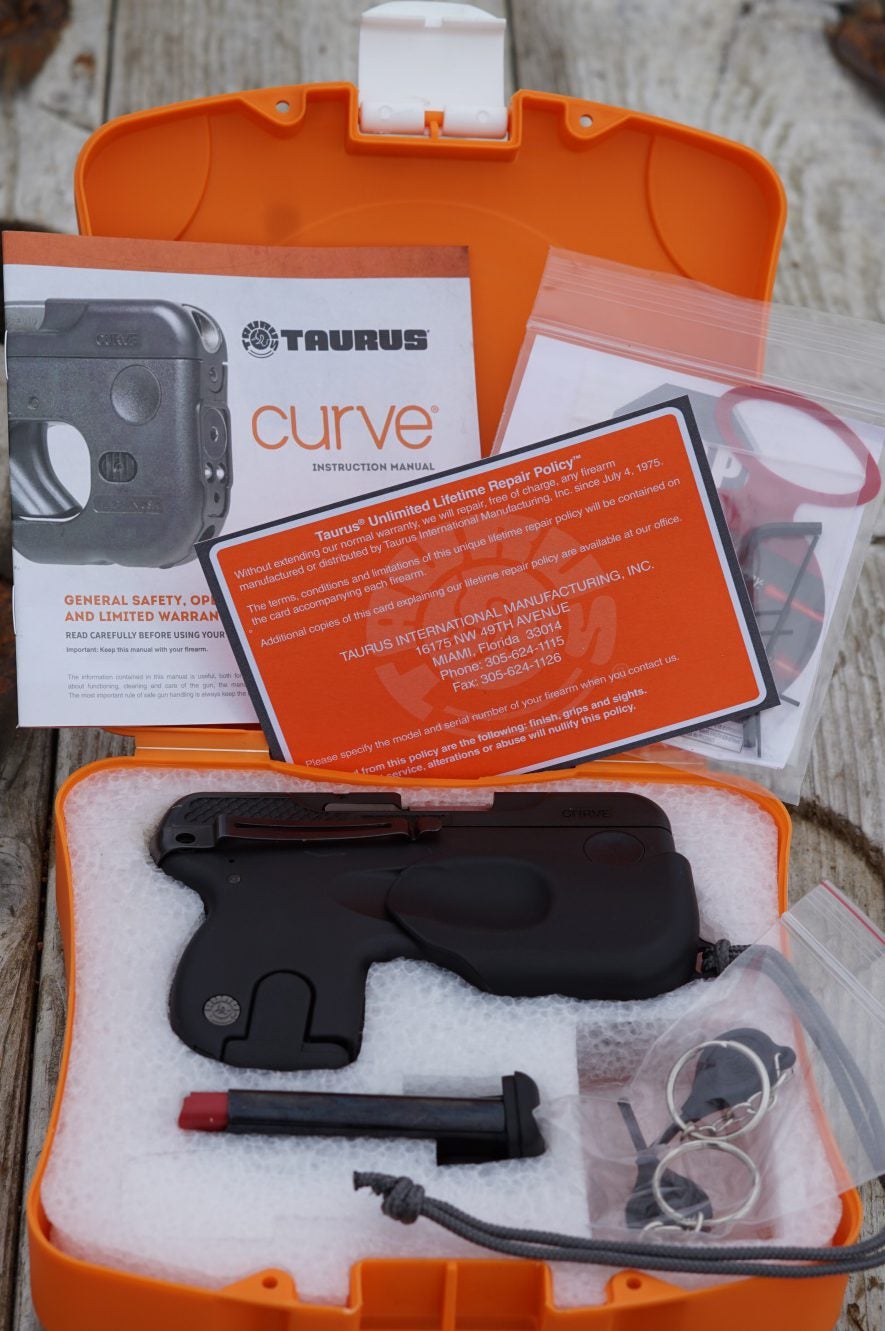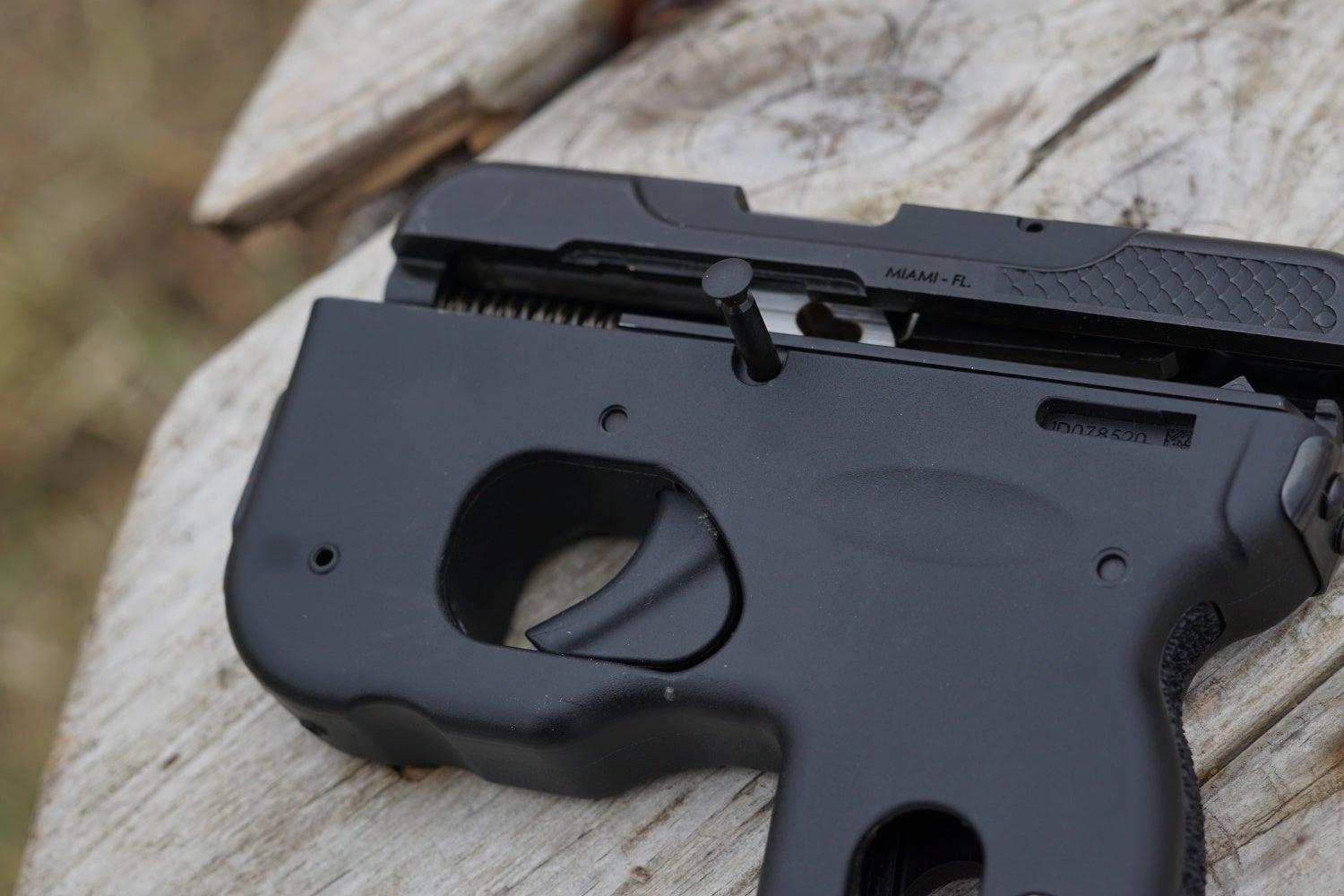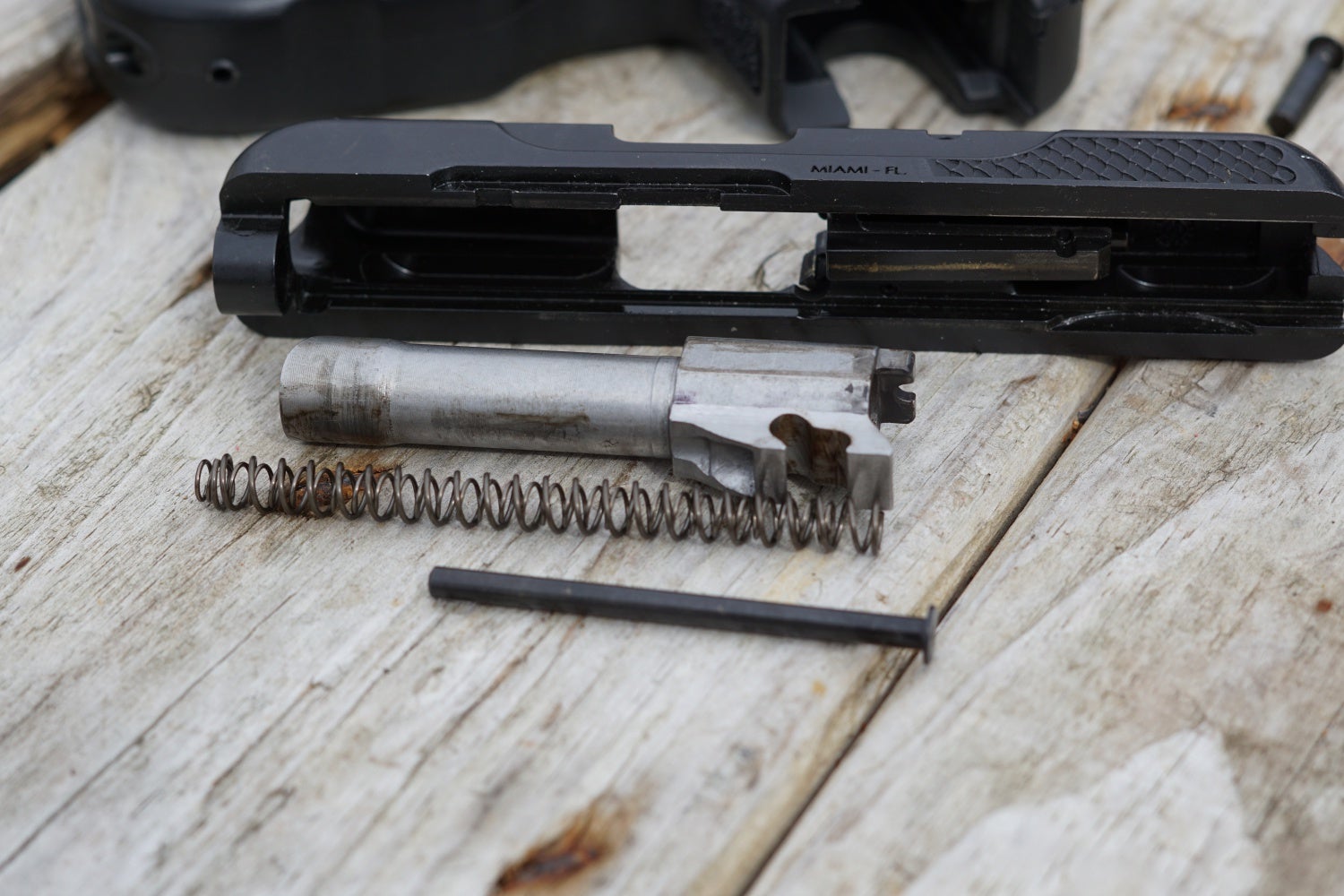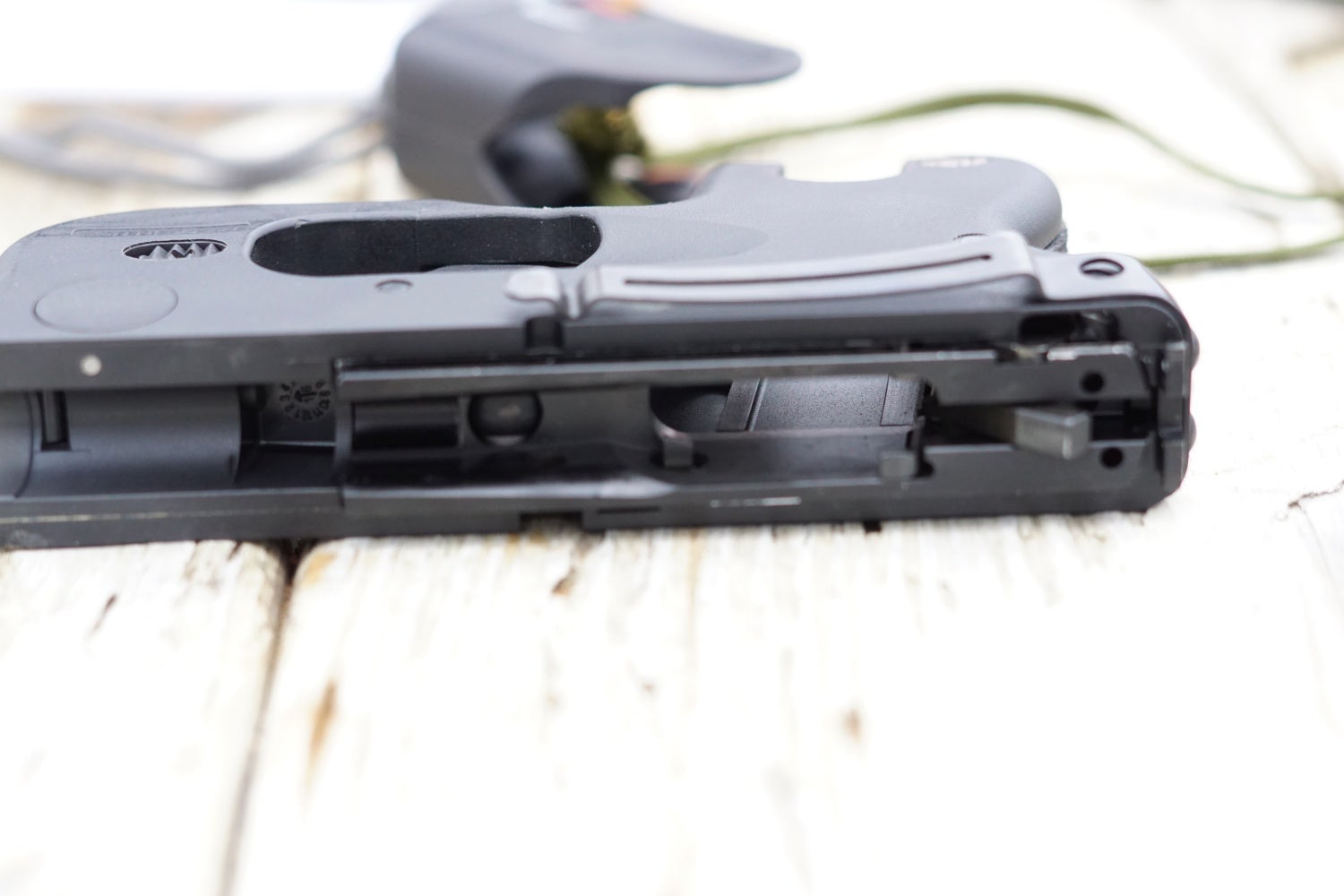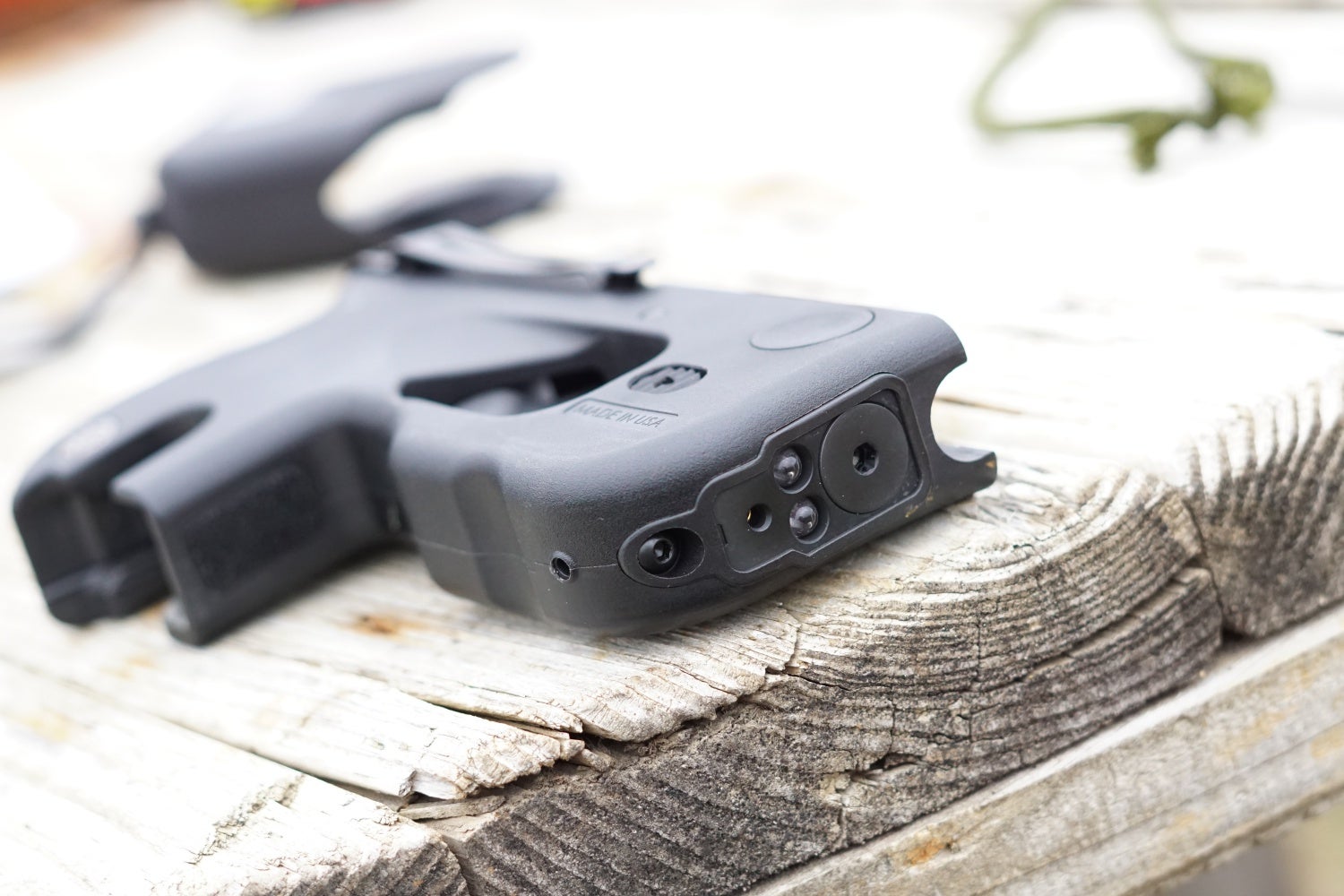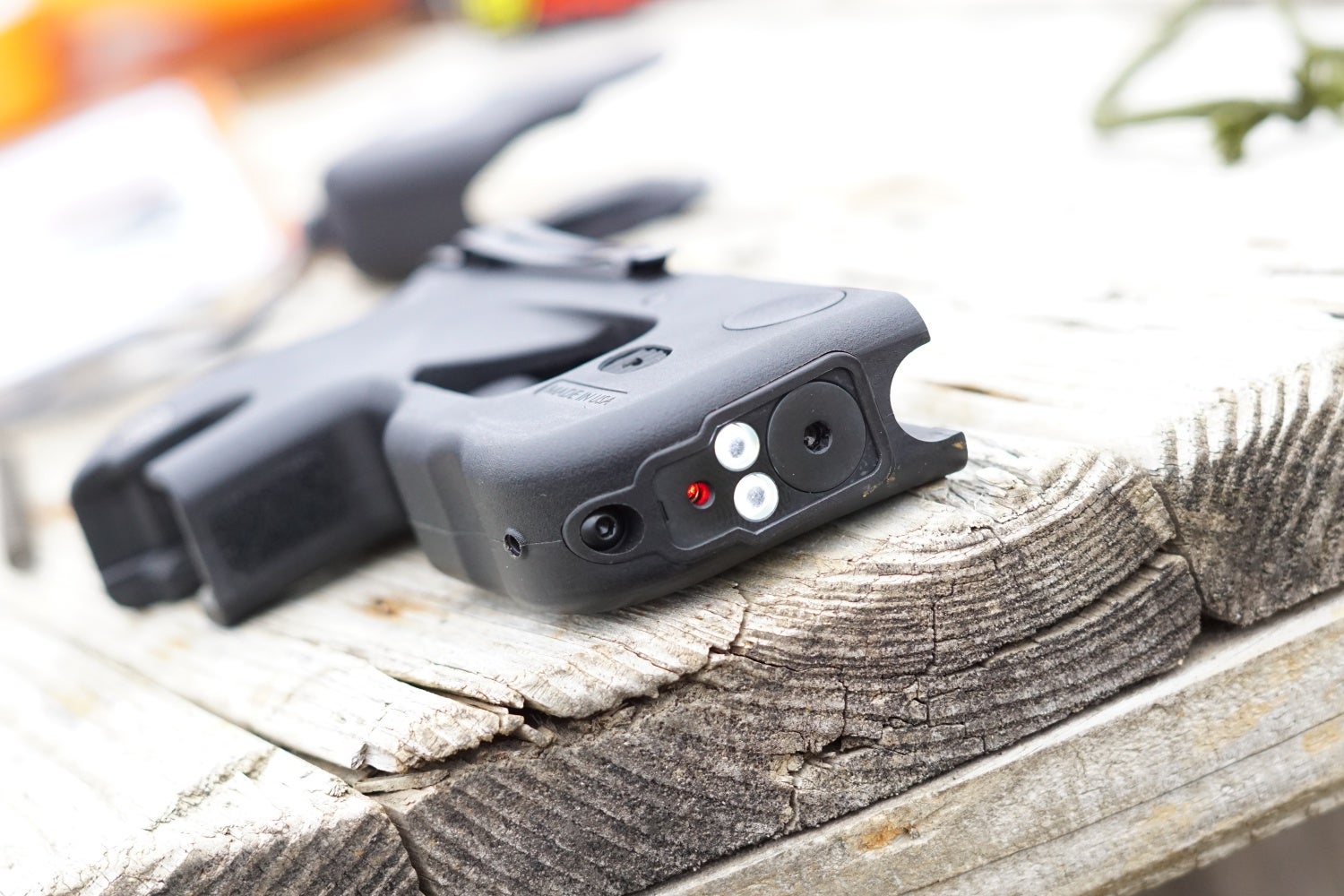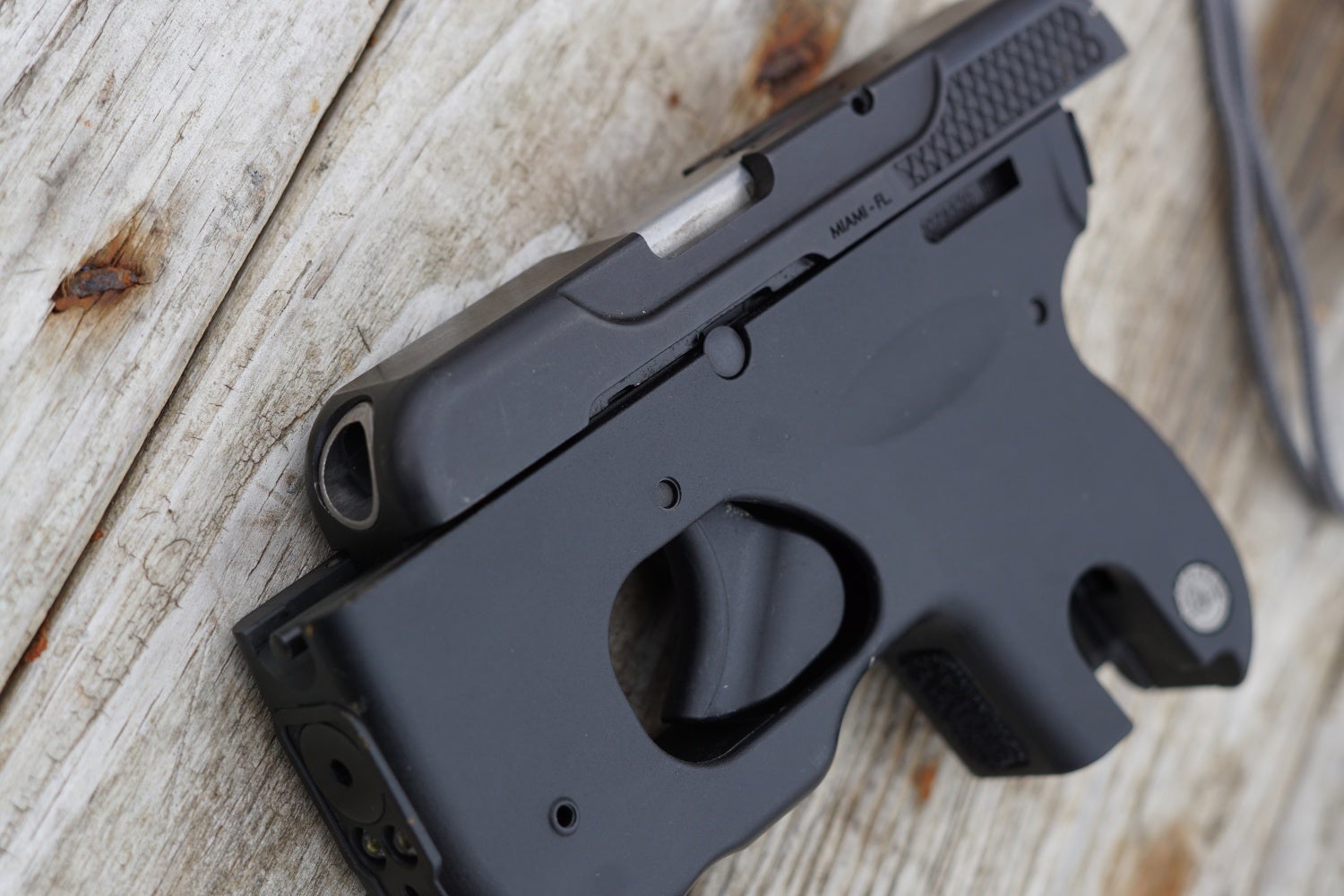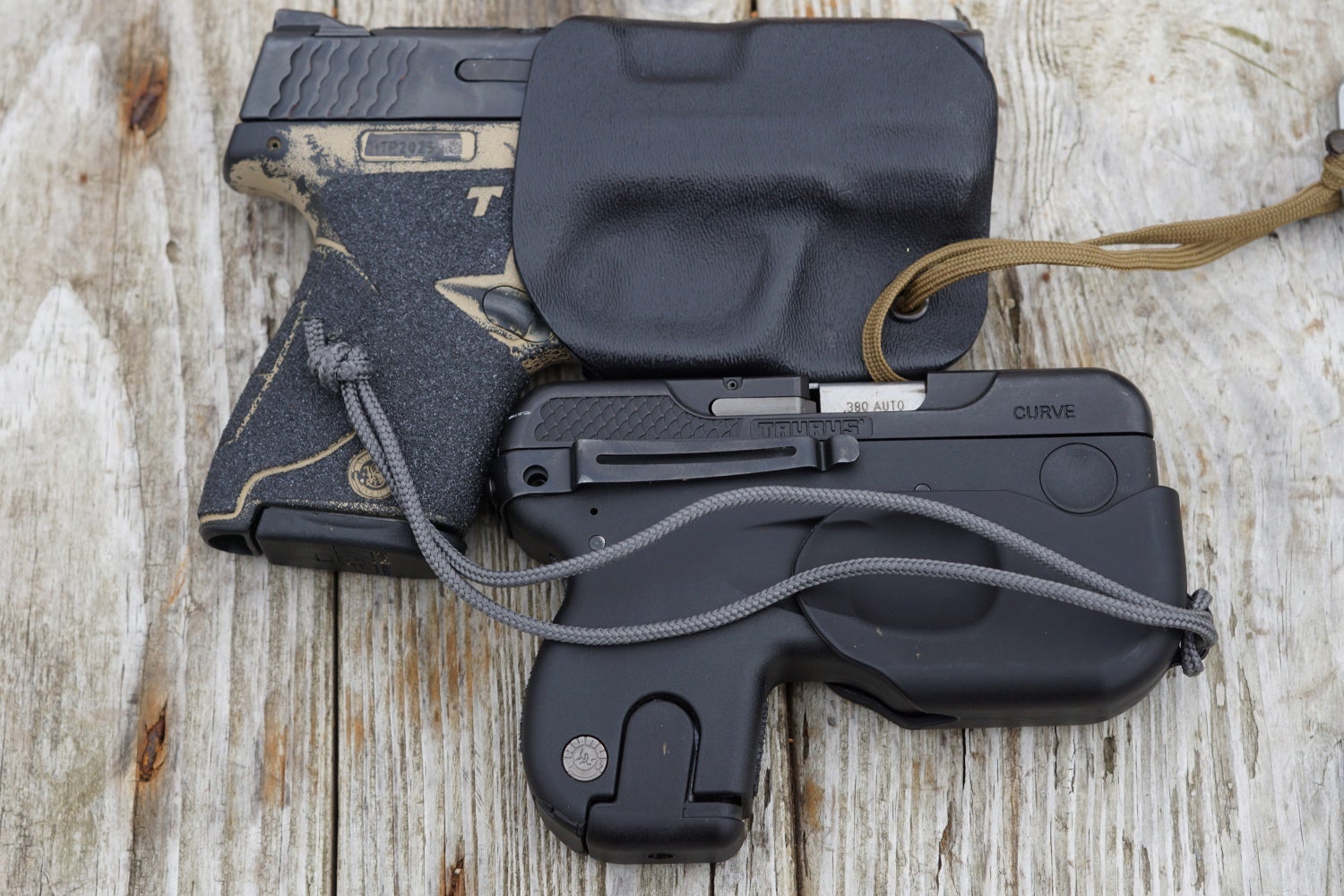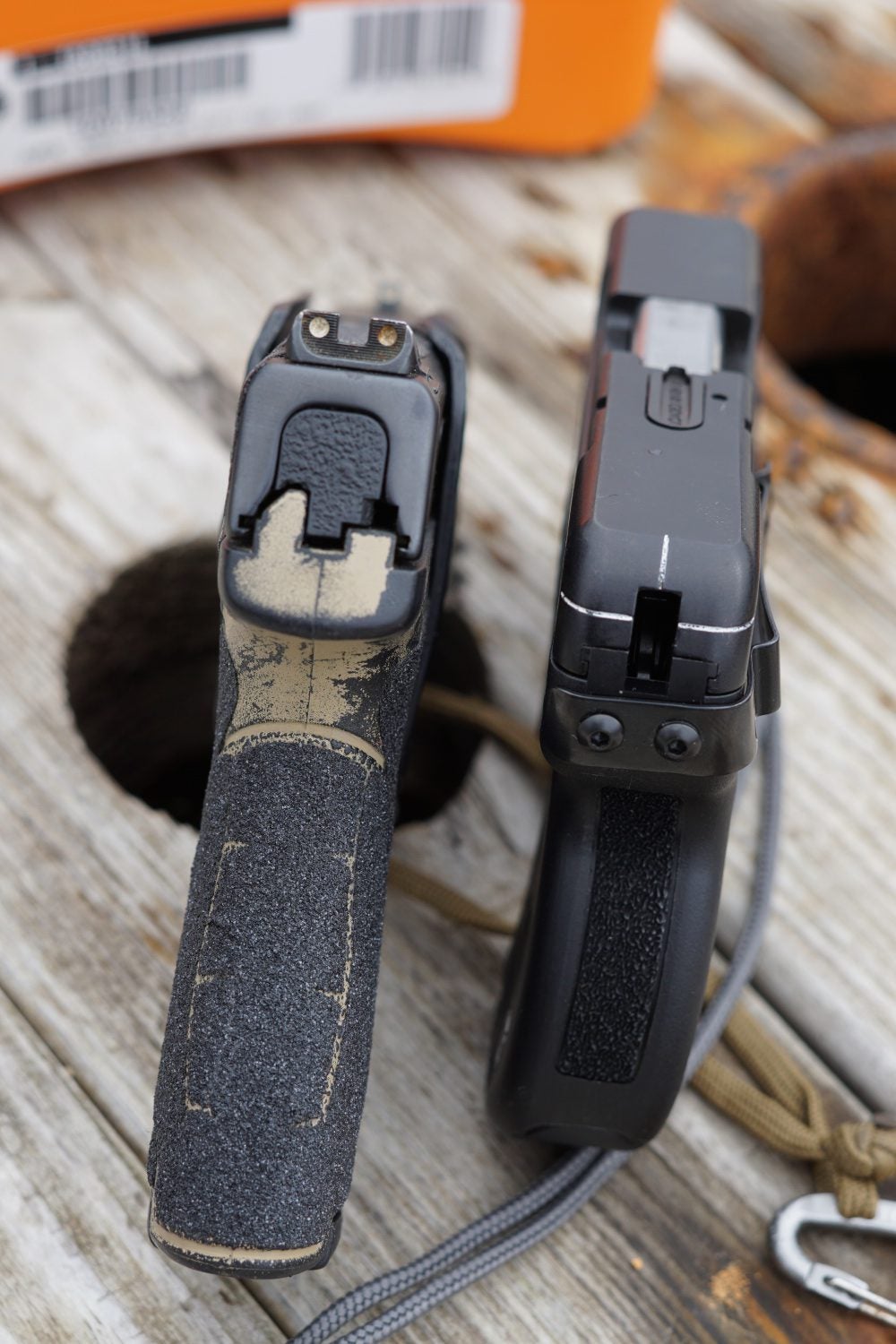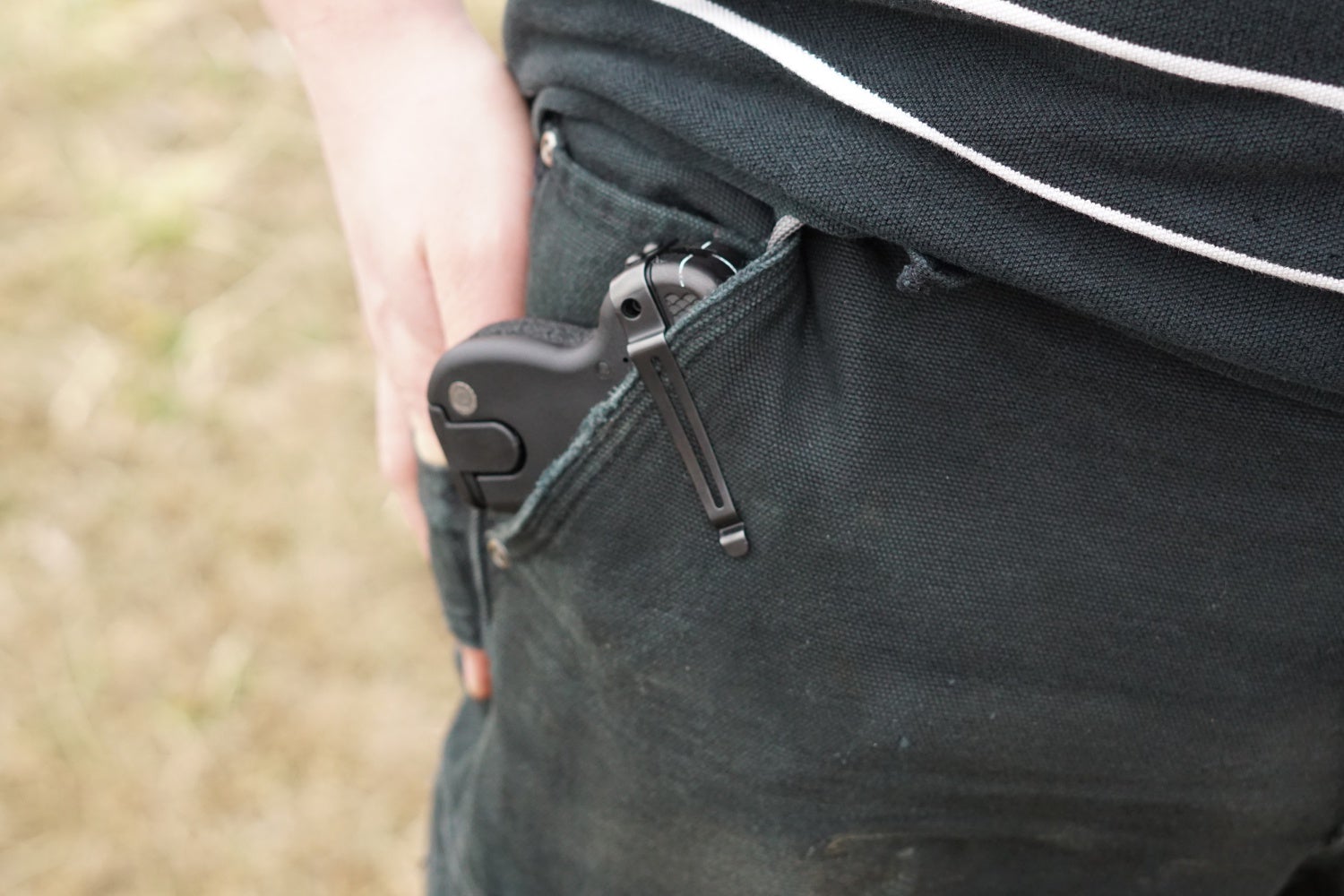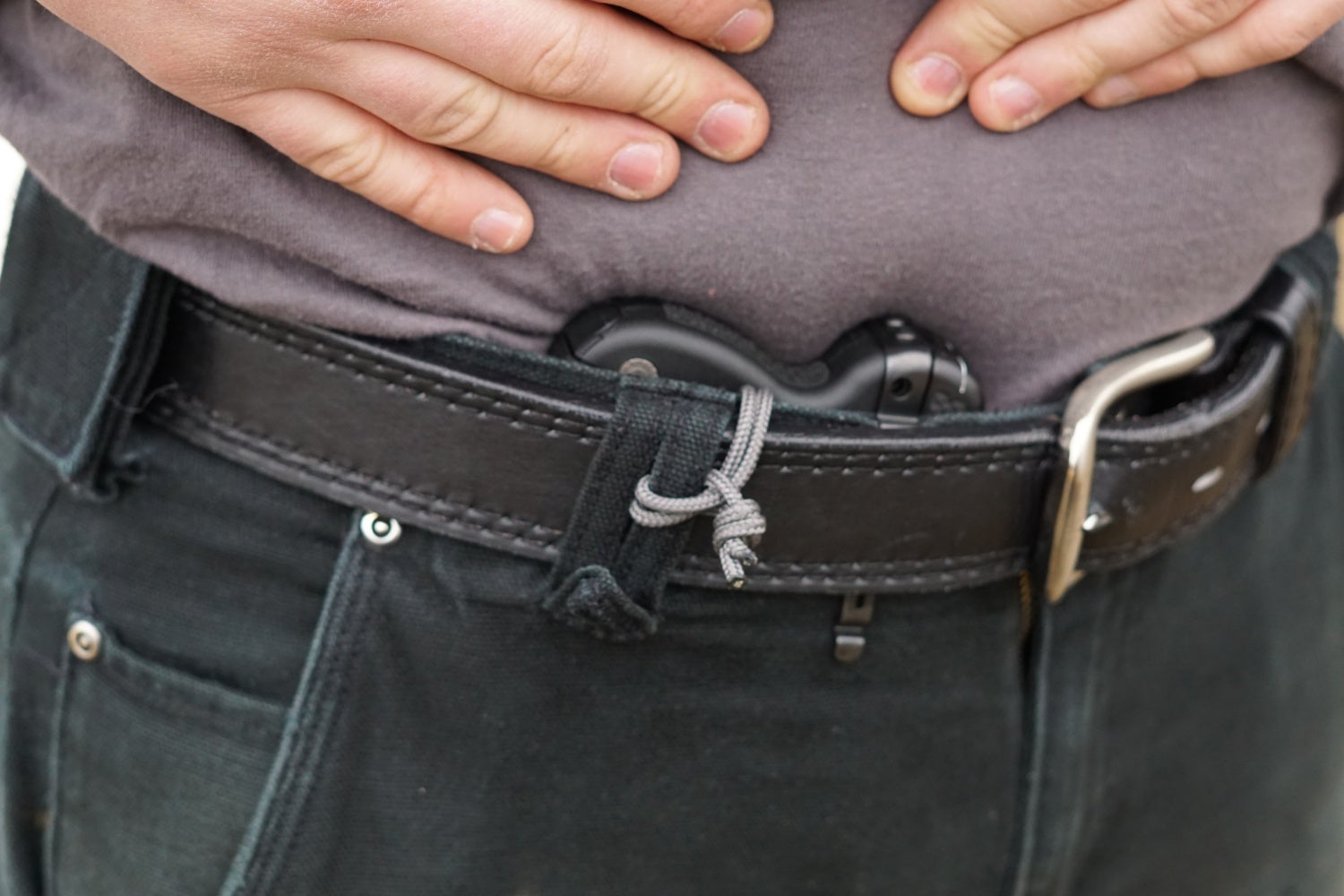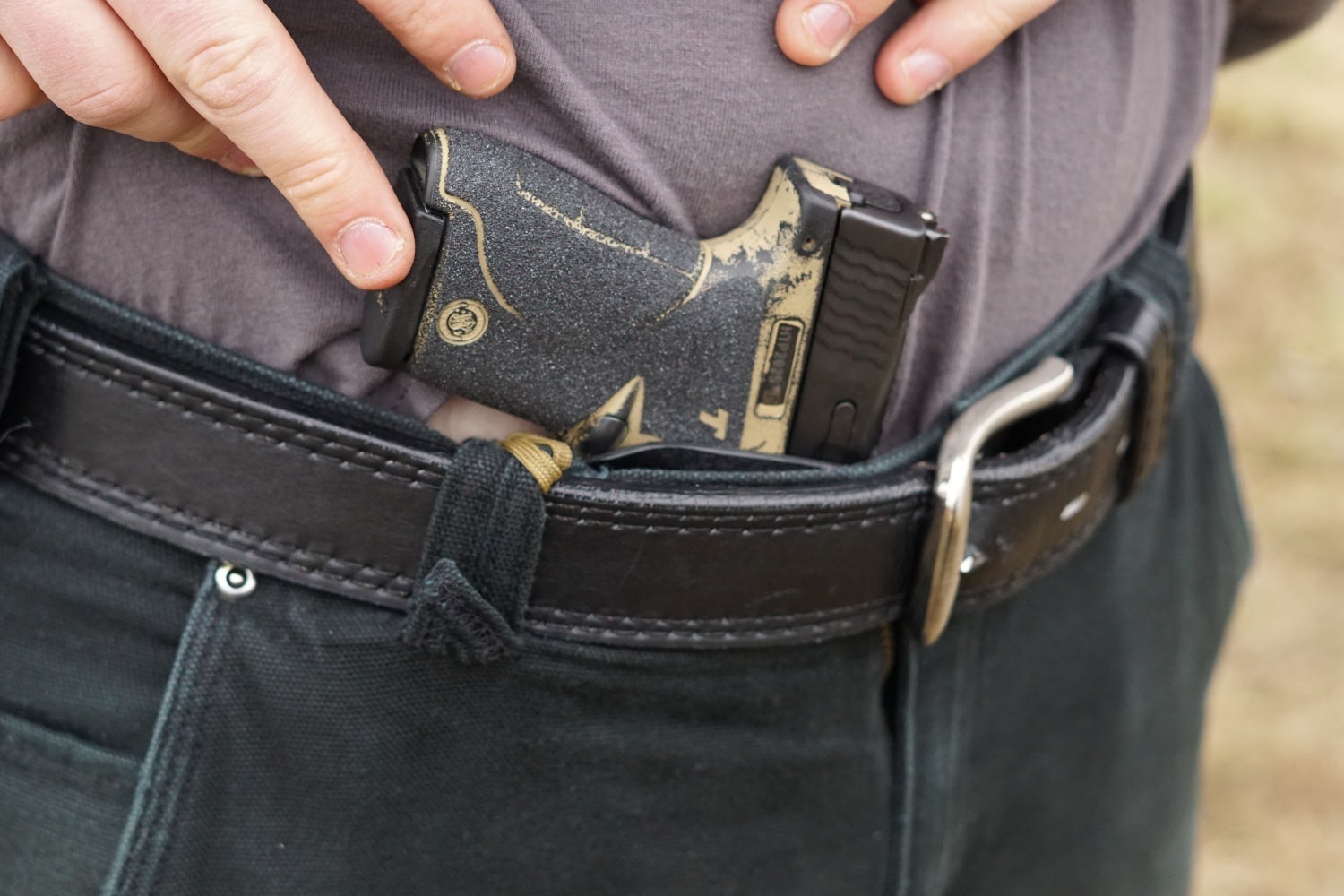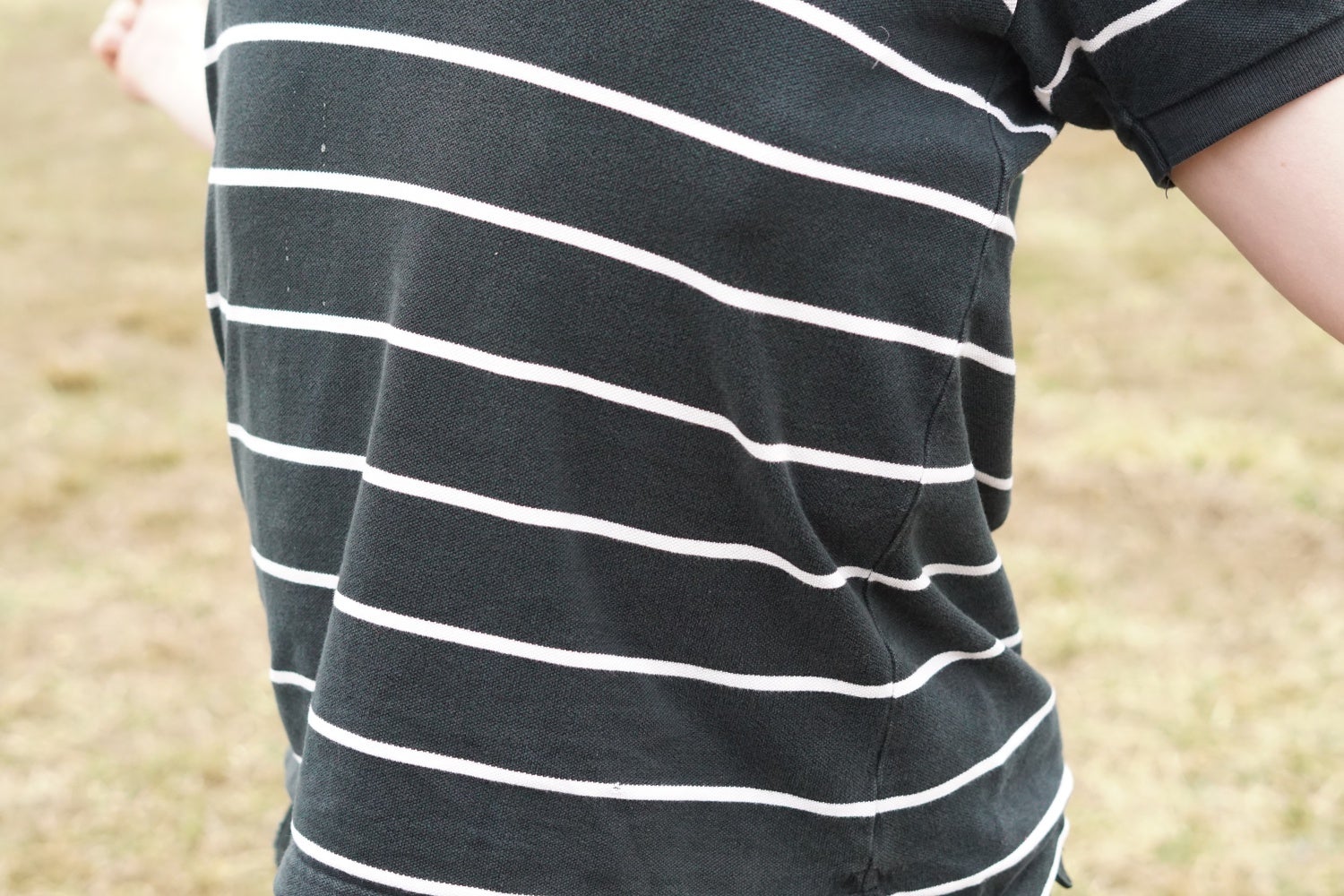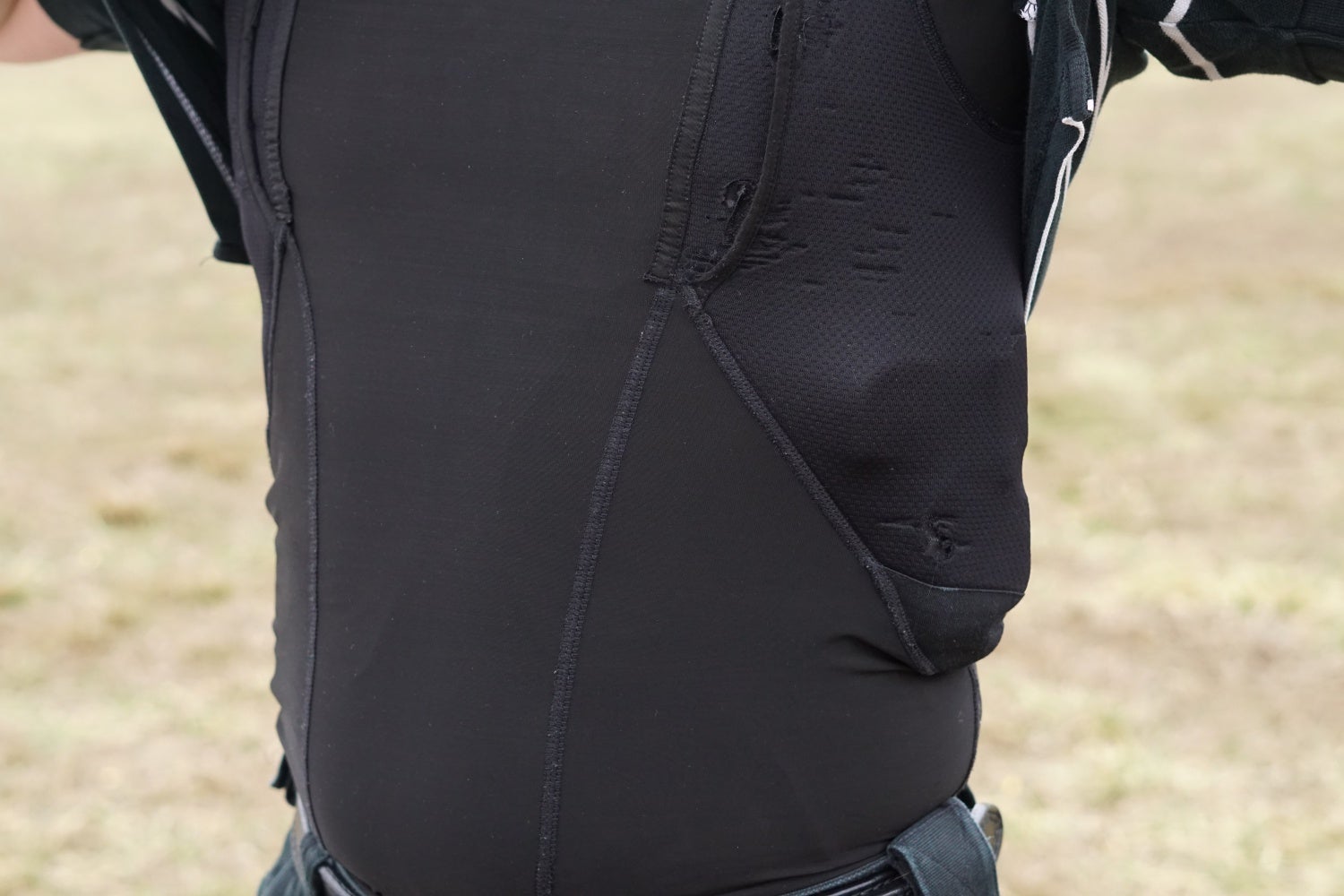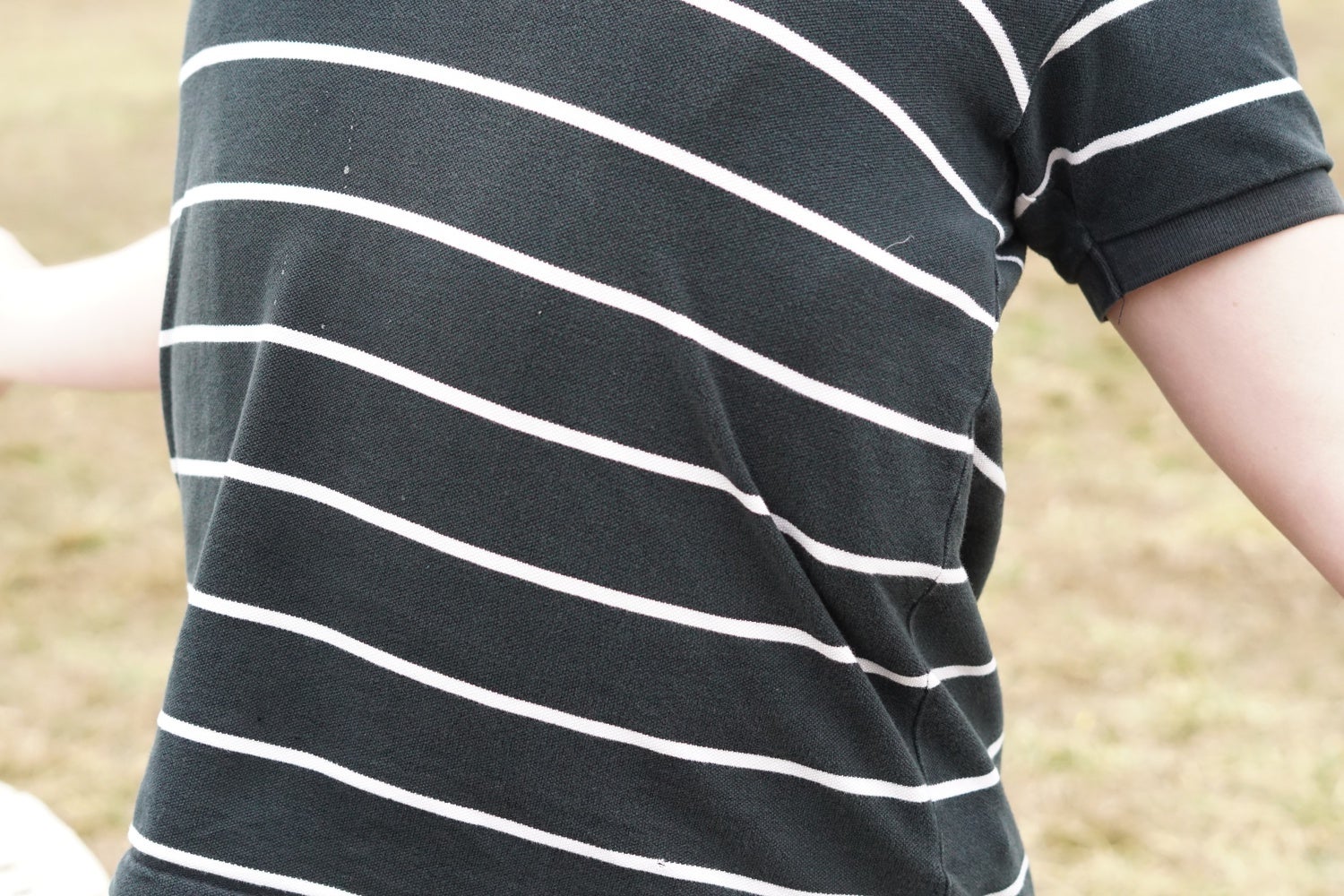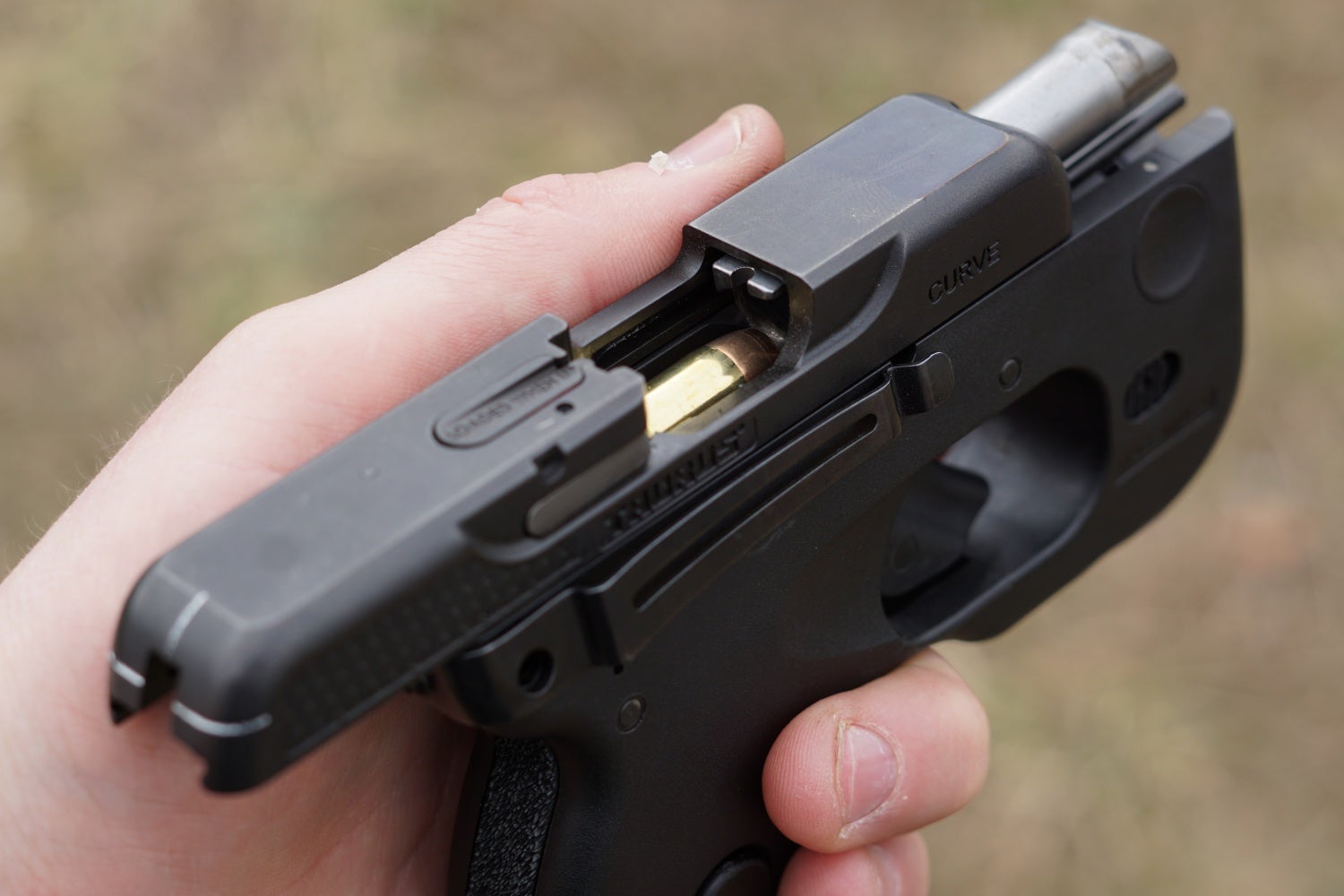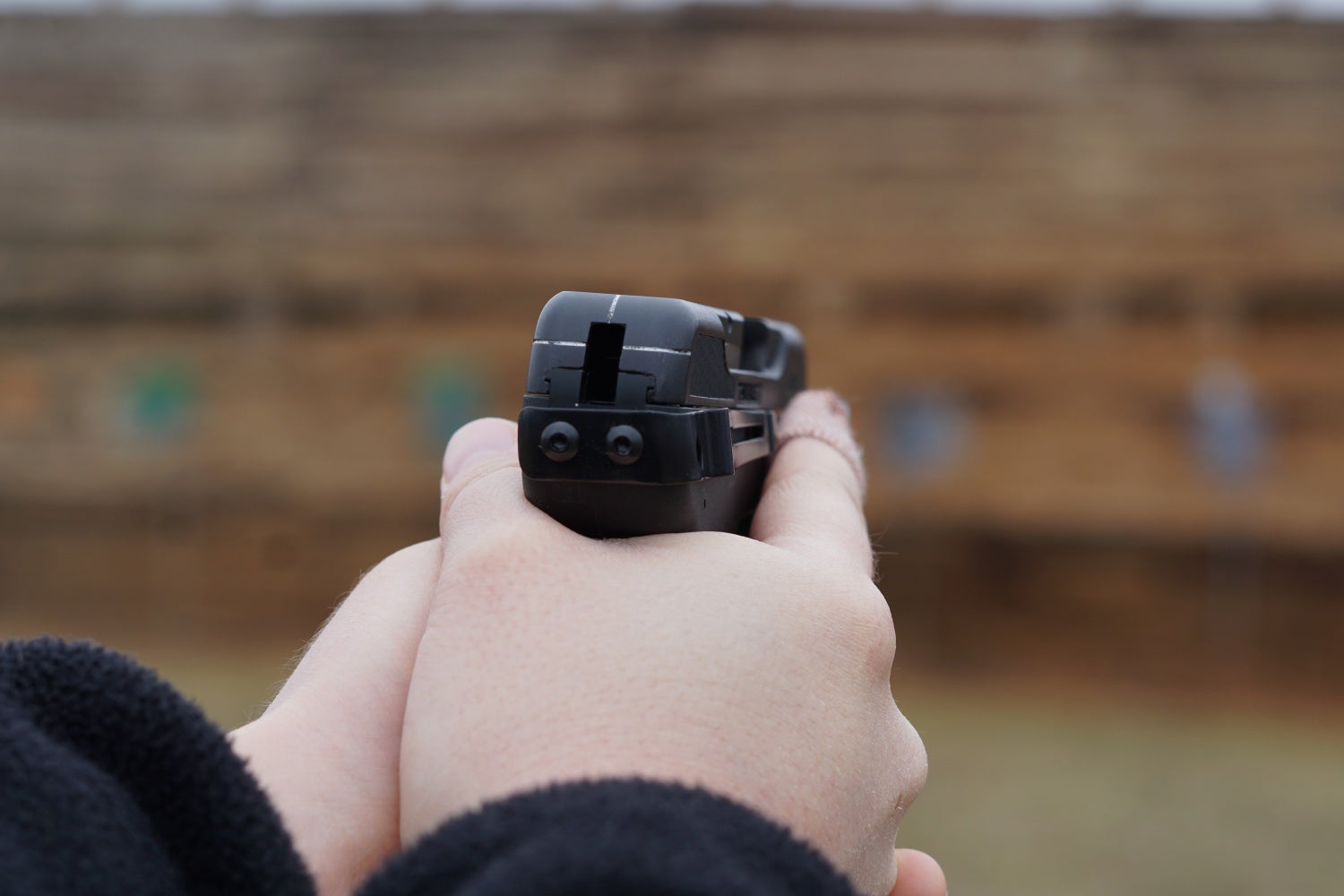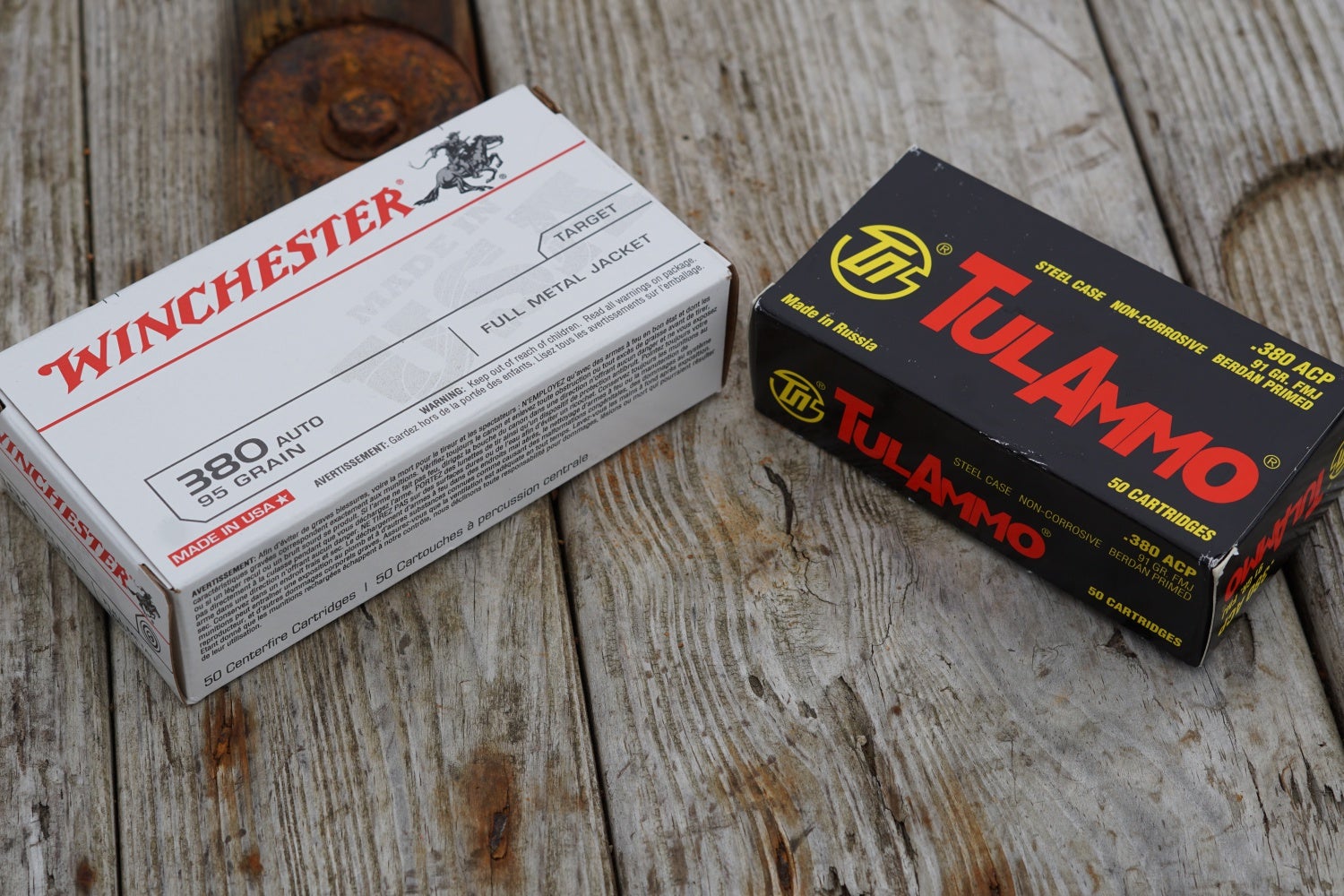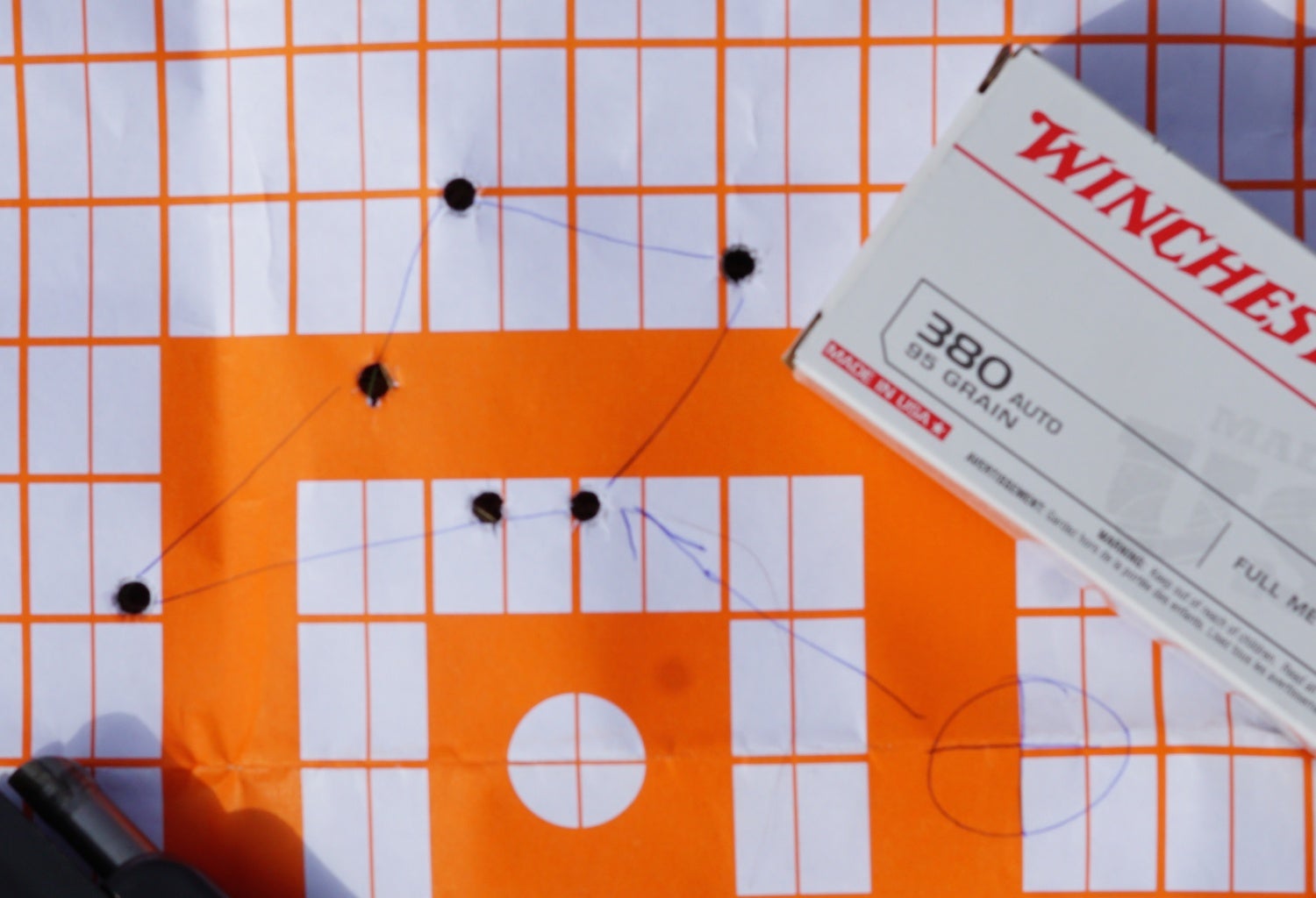When the Curve first came out, the two general reactions were either, “Wow, what a neat idea, conturing to the curve of a torso or waist”. Or, “Good Initiative, bad judgement”. Whatever camp your opinions fall in, we’ve taken an objective look at the Curve at TFB and will attempt to give as comprehensive review of the handgun as possible for our readers.
To begin with, the Curve should almost be viewed in the light of a proof of concept instead of another handgun coming to market. Understand that the Curve was designed for and fulfills one purpose: armed self-defense within 15 feet. The pistol probably isn’t something you’ll want to be taking to your next IDPA match with its seven round magazine, and certainly isn’t anything you’d want in an NRA Bull’s Eye Match because of its complete lack of sights. The Curve isn’t a skimmed down sub-compact version of a full size service handgun. It also isn’t a self-defense take of another design. It is a proof of concept from the ground up, completing intended for the armed citizen to use it in a self-defense situation, while being tailor made for concealed carry.
My take on concealed carry is that everything is a compromise. Ideally, if I could carry the way I truly feel would be the best method to protect myself against deadly force, I’d be strapping a Safariland ALS holster to my belt with a full size, extended capacity, polymer framed/striker fired handgun, several magazine carriers also on the belt, and a plate carrier/kevlar/fighting rifle in my car. But alas, I don’t live in the deep woods and instead conduct myself within our society with rules and regulations.
Thus, I have to make several compromises when it comes to firearms, ammunition, and gear. Now, that being said, I believe that concealed carry should be a continuum that is based upon the situation and setting I find myself in. So I can’t carry my Safariland ALS open carry, I have to wear a jacket over it. So the Safariland prints too much, thus I move to my Kydex that is more form fitting. I can’t risk revealing the handgun casually, so now I convert my Kydex OWB to an IWB. Now I’m moving to a compact or sub-compact handgun with an IWB, and tucking my shirt over it. Barring this, I move to a holster-shirt or an ankle holster. If that isn’t possible, some thought should probably be taking to even carrying a firearm at all. Maybe a knife or flashlight would be better options at this point. Also bear in mind that this continuum doesn’t have to exist with multiple size handguns, although to maximize it, it really should be used as such. It can also exist with one size handgun, and multiple holsters.
That last category of deep concealment I would like to label it as non-permissive not because it is illegal through CCW (not advocating breaking the law), but instead it runs a high risk of a handgun printing or being noticed while carrying completely legally. This could involve being in a highly social situation where there is constant body interaction, maybe in the summer where people are dressing with much less clothing than in other colder seasons, etc…
This continuum is constantly changing, gear is being switched out, smaller handguns are replacing larger handguns or vice versa. At the same time I should be training with every set up constantly, from different positions, drills, and scenarios. I should be as proficient with one set up as I am with any other, at any given time.
I see Taurus’ Curve fitting excellently into this concealed carry matrix. The sub-compact handgun has an excellent advantage when working in an environment where size and concealability are of an utmost importance to a user. The curvature of the polymer frame does help very well with wrapping around a chest or waist. The overall size of the handgun aids in this as well, with smooth corners contouring to a round shape instead of a square edge that many slides or grips have these days.
However, I must say that the Curve cannot be seen as the end-all, be-all for handgun concealed carry. As I mentioned earlier, that continuum is very important to abide by in my view. If you can carry something with a larger capacity, a more effective cartridge, maybe in an OWB configuration, then you should absolutely do so. If you need that extra low-profile edge, then the Curve is certainly a very good option for such a concealed carry situation.
What you Get
Along with the handgun, you get two 6 round magazines, a trigger guard protector, two keys for the trigger guard lock, the usual manuals and some adjustment keys to adjust the laser onto target. All of this comes in a plastic box that is also curved!
Description
The Curve is a semi-automatic, blowback operated subcompact handgun chambered in .380 ACP. At this time there is no plan to update it to a 9x19mm cartridge. While the magazine holds 6 rounds, it can be topped off with a seventh in the chamber, brining it to a 1911-like capacity for those used to the 1911 platform. It has a loaded chamber indicator on top, in addition it doesn’t have any conventional sights. Instead it has three white lines that intersect at the rear of the slide, forming a sort of quick combat sight picture. I found that it was very difficult to engage a target accurately with this system however, one of my friends who tried it out was able to put a better group than me downrange so I can’t write off the system entirely. Instead I actually used the loaded chamber indicator when there was a round in the chamber to align the target between the two raised bars that pop up. There is also a magazine disconnect that was incorporated so the Curve could be sold in restricted states. The handgun weighs 10 ounces unloaded. The magazine is held in place by a latch at the bottom of the magazine itself on the left side of the firearm. Locking the slide back can be achieved on an empty magazine either manually or at the conclusion of a firing cycle, otherwise the slide cannot be locked back without the magazine.
Disassembly
To disassemble the Curve there is a pin with a rounded portion on the left side of the handgun. This must be pressed up with a sharp object while the slide is to the rear. Pushing the pin out allows the slide to go forward, however pushing it out too much pushes the entire pin out itself and it has to be inserted back in the handgun. I would have really preferred if the pin were captive in some way for this matter. Releasing the slide off allows the gun to be broken down into the operating spring, barrel, and slide. Reassembly is the same, just making sure the slide gets in the right position for the pin to be inserted fully.
Laser and Light
There is a switch on the right side of the handgun that when pressed forward and locked operates the light and laser. This can then be programmed so you can have both turn on, or just one or the other. The light is two bulbs just below the muzzle, while the laser is a single beam below that. The battery compartment is on top of the combination, also just below the muzzle.
The red laser and light combination are a noble effort but I think Taurus went too far in trying to jam all the components of both options into the frame of the handgun. From a personal standpoint although I can see the benefit of a laser, it is very hard to me to conceptualize using it in a concealed carry self-defense scenario. A light I can absolutely see the advantages of. But with the package that the Curve has, it appears it has taken two great tools and minimized them to two average tools if that. The beam from the light isn’t enough to be effective either as an illumination tool or even as a blinding portion. The laser is a neat addition but the switch to operate both of these isn’t precise enough or user friendly enough to make either effective in operation. It is too small, too difficult to operate while sliding forward, and is easily turned on.
I would rather Taurus have just maybe included the laser with a much better operating switch. As a matter of practice I have placed great emphasis on carrying a small, tubular flashlight at all times. A dedicated flashlight can be used to illuminate areas that your phone’s light can’t, it can be used as a tool if it has ridges on the end of it, and it can be used as a weapon in of itself. But most importantly, I can take a flashlight everywhere I can’t take a firearm, to include an airplane or government buildings. Thus although I might be disarmed with a firearm, I still have a legitimate self-defense tool that I can train with while in a non-permissive environment.
Thus, with the Curve, I say ditch the light, and I’ll carry a more effective one on my own, that I can still use while employing the firearm in a self-defense capacity.
Trigger
The trigger is atrocious. But Taurus knows this and actually wants it that way. It is a very heavy, almost double action pull for every shoot, with a long reset. However, the principle of the design is apart of the trigger, in that purely self-defense firearm should have a very heavy trigger. Every squeeze of the trigger must be very intentional throughout the process of firing, similar to a double action revolver. A point I must add however, is that the two experienced shooters at the range (myself and friend) had no problems engaging the trigger between shots. But we did have an unexperienced shooter there who tried the Curve out and had numerous problems trying to fire the handgun. Essentially the first round was firing but the trigger wasn’t resetting correctly. After a magazine or two of guided practice, the issue went away entirely. To be honest this might have had to do with the inexperienced shooter slapping or otherwise incorrectly pressing the trigger, and less to do with the Curve. However, this shooter has shot firearms before and not experienced a similar problem.
Because of this issue (related or not), and some of the others described here, I don’t think the Curve would be a good choice as a first handgun for an inexperienced shooter. As a second handgun or otherwise, sure, it would be great, once someone has mastered the basics of safety.
In this video you can see the extremely long reset, and after one of the trigger presses, you can notice that I thought the trigger hadn’t gone fully forward but it had.
Trigger Guard Protector
The trigger guard protector that comes with the firearm is sufficient for protecting the trigger guard from any foreign objects entering it and possibly engaging the trigger. It has an extruding hole at the end of it for a supplied loop of cord that is designed to anchor the handgun to a belt loop or other such enclosure. My only issue with it is that the retention loop isn’t apart of the protector but rather an extruded portion that is liable to break or be smashed off in some way. Instead, I would have liked the cord to be going through an actual hole in the protector, making it more reliable. I also would have liked the protector to be made out of Kydex and not injection molded plastic, but I realize this plastic protector does just as well as Kydex in most respects, and it keeps the price down.
Does the Curve Effect Work?
The “curve” portion of the handgun is all in the frame, the slide itself isn’t curved at all. Shooting it felt a tad odd, but nothing I didn’t get used to by the second magazine. It isn’t curved enough that it feels awkward in your hands so that is very good. For right now it appears that there is only a right handed version of the Curve and nothing for those south paw shooters out there.
With a Shield in a holster shirt, and intentionally stretching to show one of the worse positions to be in if the handgun prints.
The same positions, but with the Curve.
The above pictures show the Curve in a holster shirt, in addition to tucking it into a belt line with the plastic trigger guard protector attached. While in the holster shirt, the Curve printed much less than a S&W Shield of similar proportions. In fact it barely printed at all. However with the belt, although it didn’t print as much, the way the belt clip was positioned put the grip of the handgun too far into the belt line, making it very difficult to draw in a timely manner because you have to really dig in to get the handgun out. For those not interested in the clip, it can be easily taken off via the two screws at the back of the frame. I think if Taurus could have positioned the clip further down on the frame, so at least the majority of the grip is above a belt line or other ridge for better purchase on the gun.
Although this video of me drawing the Curve is rather slow, I did get faster with the gun through practice. I still think the belt clip should be much further down if it is intended to be used in a belt-line.
Malfunctions?
In the trigger description I mentioned the trigger slap being an issue however I am still unsure if it is more shooter error or Curve induced. Although we know and understand the .380 ACP is inferior to the 9x19mm round, this is a compromise that some shooters would be willing to make for the smaller size of the Curve and the round capacity that wouldn’t be possible with a 9x19mm chambered handgun of similar size. That being said, as I have experienced with other .380 ACP sub-compacts, we did encounter several malfunctions throughout the course of fire, most of these being failure to feeds.
Ammunition and Accuracy
I don’t like the white intersection of these “combat” sights very much. Not at all in fact. If you watch the embedded videos above, notice I’m probably only hitting around fifty percent of the shoots I’m taking at the steel. I’m usually very decent with steel at the 15 yard and under range I shoot at for CCW drills, but this was pretty bad using the white quick sights. It wasn’t until I began using the loaded chamber indicator as a sort of sighting alignment aid that I started actually getting on target. Maybe I just wasn’t using the point and shoot sights effectively or something else, but I couldn’t hit anything with them. Moving to paper showed that despite using the loaded chamber indicator at seven yards, the Curve was shooting around three inches left and two inches high. There is really no way of mechanically adjusting this either, unless the laser is used. If Taurus could make a sort of low profile ridge or just anything on the slide to use for sight alignment other than the loaded chamber indicator, this would dramatically improve accuracy.
Final Thoughts
Is there a place for the Curve for someone who conceal carries? I would say yes, there is, but only within that continuum I described earlier. For a deep conceal, low visibility profile, the Curve does a very good job of providing a viable defensive option that leads well to being carried safely, and without readily printing. Both of these are large concerns for some CCW carriers, often finding themselves in very non-permissive environments. However as a primary concealed carry handgun, I would not recommend it as a “Go-To” daily conceal carry (unless one is constantly within that non-permissive environment). At least not until such issues as the sighting alignment, belt clip placement, light/laser issues, and a smoother trigger. Keep the curve aspect, size, caliber, magazine locking system, trigger guard protector, small trigger guard, and the Taurus should have a winner.
 Your Privacy Choices
Your Privacy Choices
